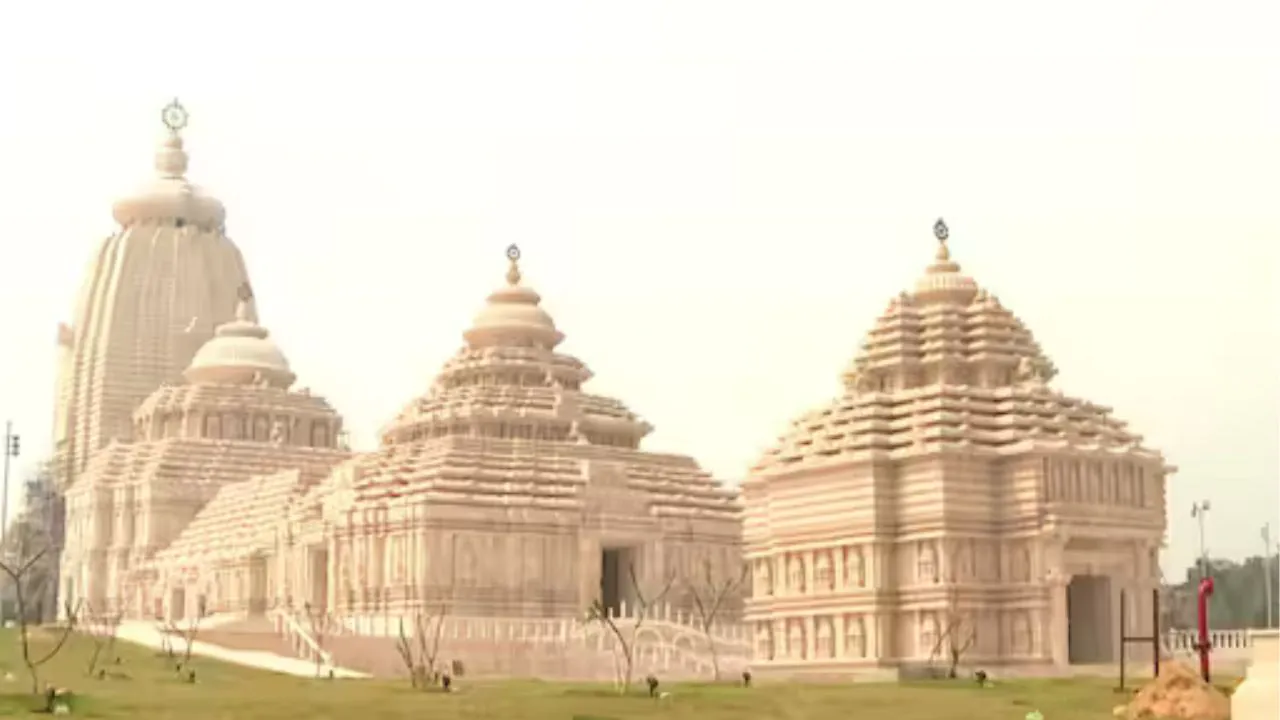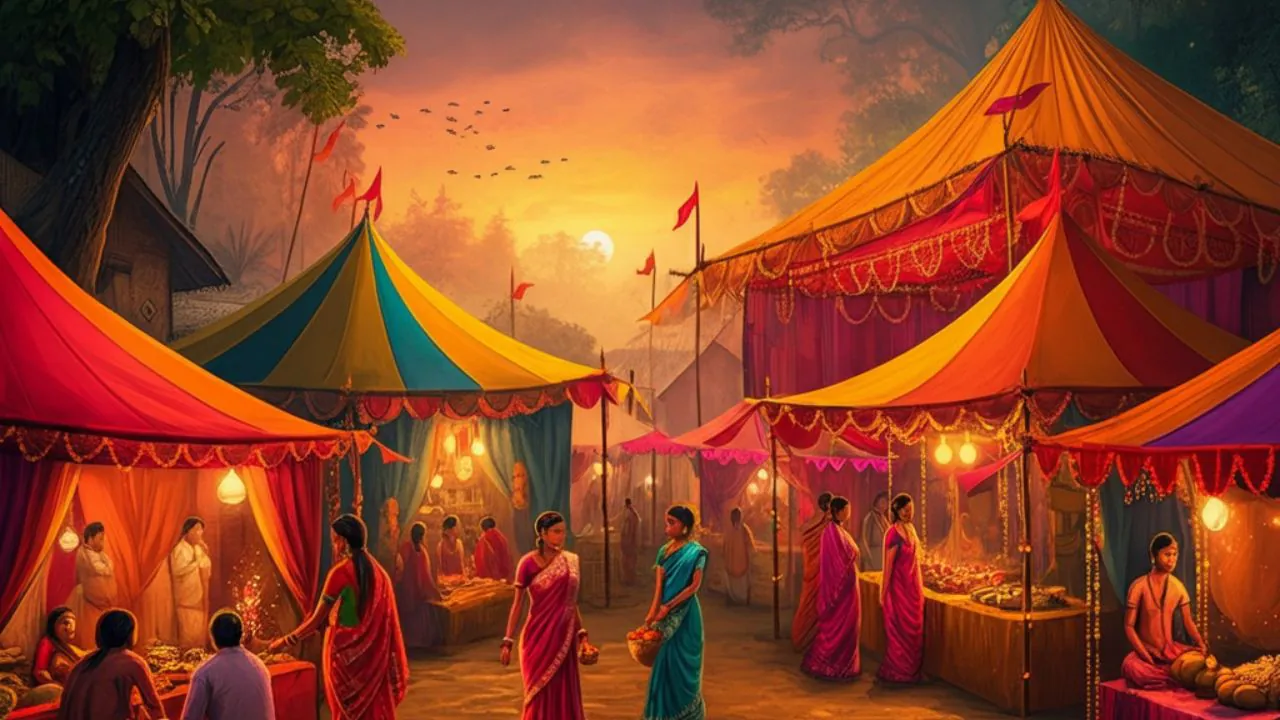Architectural Styles: Investigating the Magnificence of Kalinga
Digha Jagannath Temple is a remarkable work of Kalinga architecture, resembling the Jagannath temple in Puri that was built in the 12th century. Following customary ratios, the temple boasts a 65-meter vimana (tower) filled with exquisite carvings of deities and mythical scenes and spends the Ith century Jagannath Temple into bl this Digha Jagannath Temple a masterpiece of Kalinga architecture. The old temple consists of four main units, which include Vimanam (sanctum), Jagamohan (assembly hall), Nat Mandir(singing or dancing hall), and Bhog Mandap(offering hall), all furnished with pink sandstones derived from Rajasthan and flooring of Vietnamese marbles. Four ornate gates- Singhadwar (lion gate), Byaghradwar(tiger gate), Haridwar (elephant gate), and Ashwadwar(Horse gate)- all have classical design characteristics.
Comparison with Other Temples in India
Unlike the Puri Jagannath Temple(12th century), which still serves as a religious dorm to only Hindus, the Digha replica allows people of all nationalities and beliefs to enter. These big systems in Digha temples, such as modern inclusivity and focus on state-driven tourism, are greatly highlighted compared to ancient Indian shrines. Digha rivals Odisha’s perspective sculpture. However, it complements its portholes with modern constructions, including sandstones, which vastly differ from Odisha’s original stone pieces, pity, and Meenakshi temple(southern Dravidian) or Kashi Vishwanath, Digha Kalinga style is more novel because it serves people in wheelchairs, physically braille.
Digha vs. India’s Iconic Shrines
| Aspect | Digha Jagannath | Puri Jagannath | Meenakshi Temple |
|---|---|---|---|
| Style | Kalinga with modern materials | Classic Kalinga | Dravidian (gopurams, pillared halls) |
| Access | All faiths welcome | Hindus only | Open to all |
| Scale | 24 acres, ₹250 crore | 10.7 acres, historic | 14 acres, 33,000 sculptures |
| Innovation | Solar panels, braille signage | Traditional rituals | Light-and-sound shows |
While Puri remains the spiritual heartland, Digha’s inclusive ethos and tourism-centric design position it as a disruptor. “It’s like Puri, but without the restrictions,” explains a local guide
Important Buildings and Carvings
The Arun Pillar at the temple’s napa entrance exhibits the sun god’s chariot, while copies of carved balustrade statues of Jagannath, Balabhadra, and Subhadra rest in the janana. A separate shrine to Lakshmi, absent in the original Puri complex, makes Digha distinct. The two circular Nilachakra (ceremonial wheel) above the vimana and floral motives on the innumerable perfected spires speak of superb workmanship.
Impact on Temples in the Region
Digha’s permissive approach to integrating solar panels and landscaping trees effortlessly is a potential model for modern replicas of the Kamakhya Temple or Belur Math. The free access policy may inspire other temples to broaden their entry protocols. The involvement of 3,000+ artisans from Rajasthan and Odisha positively impacts aggressive stone carving through cross-regional craftsmanship collaboration.
Socio-Cultural and Commercial Influence
The chosen site is strategically important for defeating exclusive narratives of religion. Supporting local ventures negates the reliance on the seasonal beachside tourist trade. Demand from hotels and vendors near the temple surged, together with over 500 new jobs created in the complex directly related to the hospitality services temple.
Visitor Experience
The recommended visit time is between October and March, when the weather is mild and spiritual activities flow well with leisure pursuits. Locations like Digha Beach (2 km away) and the Science Centre (4 km away) encourage a balance between worship and tourism. While modest clothing is mandatory, sanctum photography is forbidden.
The Jagannath Dham Temple marks the coastline of Bengal.
While the temple bells chime, the Jagannath Dham temple in West Bengal is fully open and operational, marvelling people with its beauty. It was inaugurated on April 30, 2025, and this secondary wonder of the world towers over the shores of Digha. It competes with the beaches of Digha and merges the 250-crore temple complex under one roof.
For the bouts of bhakti and beach lovers.
Tapan Jana, a big lottery seller, also shares this insight: “Digha has been famous for its calm beach waters, not so much for temples. So you never know.”
This godly marvel and its architectural prowess have enchanted worshippers worldwide, paving a pathway for hope and outlook through spirituality.
Modern Blend Construction and Kalinga: They’ve outdone themselves
The temple is built directly underneath the 65-meter pendant-style vimana, while the coastline temple sits above the water.
With soaring palm-like pillars, the pink sandstone base, and the Vietnamese floor, Cambodia looks up from the bottom.
More than 20 iconic gates exclaim the beauty of the lion, tiger, elephant, and horse.
Unlike competing temples, though, this one is specially designed to be wheelchair accessible so devotees of all types can bask in the glory. Temple Showdown: Digha May Not Surpass India’s Iconic Shrines
“The rest of the devotees may enter, but foremost, Digha is more tourism-centric. Puri is the spiritual heartland,” explained a local guide.
Citizens of Digha have legalised access to the temple without any limitations, unlike Puri, which restrains outsiders and enforces restrictions.
Stone Chronicles: Myth Comes Alive
Within the sanctum is a serene and elegant Jagannath Balabhadra and Subhadra stone idols festooned by 70 Puri priests. The Arun Pillar, a symbol of the sun god’s chariot, rests atop the courtyard while the Nilachakra ceremonial wheel atop the vimana sparkles in the Bengal skies. Each carving is painstakingly done by artisan Rajesh Pradhan, who sculpts into floral motifs: “Every carving here tells a story.”
Regional Ramifications: Digha Temple And What It Means for Religion
The temple’s open-door policy may compel other shrines to ease their entrance restrictions. Rumours of a Kamakhya Temple copy in North Bengal point to an architectural renaissance for the state. Even craftsmanship is booming. Over three thousand Odia stone carvers and Bengali masons, to mention just a few, co-created here, restoring lost crafts. Project head Debashis Sen says, “This temple isn’t just stone—it’s a classroom”.
Politics, Economy, and the Boom for the Vendors Near the Beach
Mamata Banerjee’s inauguration speech referred to the temple as “Bengal’s answer to divisiveness,” politically framing it as uniting. The temple is also economically viable. Hotels are experiencing a staggering 40 per cent increase in bookings, and vendors like Tutu Sana have started to believe that Rath Yatra-themed stalls will significantly increase sales. “It is certainly a game-winner.” Over five hundred positions have also emerged, from certain essential priests to the more mundane gardeners.
A New Chapter for Digha
The Jagannath Dham Temple exemplifies how spiritual tourism can be reimagined in India. It blends ancient Indian architecture with modern principles. All temples in the region and the temple’s cultural diplomacy impact Sutain Bengal as a centre for holistic worship. This simultaneously shifts the image of Digha from a quiet beach town to a bustling hub of faith and heritage.
You may read this: Ajay Devgn’s Raid 2 Opens with a Bang – Here’s How Much It Made on Day 1
Visit Jagannath Temple, Digha











